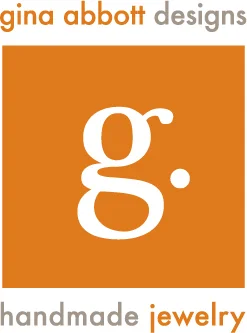labradorite pendant . . . it's taken a while . . .
the summer has been so busy! i have had lots of projects going on this summer (some jewelry and some other creative endeavors) and have not found the time to update my site, so it's time to catch up! first up . . . a labradorite pendant that was commissioned from a friend for their wife's birthday.
this was a great, but tough project as i was given free rein in design and it is so hard to narrow down all the ideas! the main direction i was given was the type of stone, type of metal, and that it should be a statement piece.
before i could start designing, the first task was to find the desired stone, a labradorite, which is a feldspar mineral originally found in labrador, canada. i had a few small labradorite cabochons but for a statement piece i went shopping. i ended up with these stones to choose from.
after speaking with my client we went with the largest stone and i began designing! this is truly the hardest part as the possibilities are endless. i have dabbed in many different techniques and two that i love, granulation and reticulation, kept coming to mind. i have not had the opportunity to utilize either technique at this scale but they seemed perfect for this piece so i went for it. here is a sketch of the design i ended up choosing.
my next step was to acquire the appropriate metal for each process. i decided to reticulate the backplate of the pendant which will give a nice, organic texture to the metal. reticulation is fantastic as no two pieces ever turn out exactly the same. the process of reticulating the metal works with the different melting points of each metal within an alloy. you also need a bit of a thicker piece of sheet metal to allow enough material to accommodate the buckling and rippling of the metal. as such i made the backplate out of 18 gauge sterling silver. i wanted the edges of the piece to have an organic feel so i decided to saw the final shape out of the sheet metal before reticulating to allow the rippling to buckle the edges a little. After reticulating the backplate i refined the edges to get a pleasing shape.
now on to the bezel! i used fine silver for the bezel wire and fitted it to the stone and then the backplate. reticulated metal can be a bit brittle so i gently made sure the backplate was as flat as possible but also modified the bottom of the bezel wire so that i could get a good connection and thus a strong bond for the stone setting.
after the bezel was soldered to the backplate it was time to add the granulation. granulation is an ancient process where granules are attached without solder and appear to be sitting on top of the surface. i created a ton of fine silver granules by balling up fine silver wire on my charcoal block. since these are fine silver and i essentially depleted the sterling backplate's top layer of copper, i had to copperplate each granule and the backplate along with adding some organic material/carbon to allow a lower melting point, thus a fusing, at the point of contact of each element, basically an eutectic reaction when heated. after several tries to get all the granules attached to create the desired look this is where the piece stood.
the final thing to think of before adding a patina was how was it going to hang on a chain. i dabbled with having it on the top and part of the design, or on the back and hidden. i chose to make the bail out of a piece of scrap reticulated silver so that it would have the same texture as the front of the piece. i had experimented on lots of pieces before reticulating the actual backplate so i used one of those and sawed and shaped it to a nice curve. given the size and weight of the piece factored into where and how i attached the bail and ultimately it seemed to work best on the back. here is where i ended up placing it and how i designed it.
my next step was to patina the silver to give a nice aged look, but also adding some darkness allowed me to remove it in some locations to give the piece more depth. i used liver of sulphur to add the patina and then brass brushed until i achieved the correct amount of contrast.
finally it was time to set the stone. after each step, especially any soldering, i have been test fitting the stone to make sure the bezel still fit the stone. i set the stone and then used a burnisher to polish the bezel and some of the granules to add a nice sheen.
last, but not least, was to make the chain. i dabbled with different thicknesses of the wire, the size of the link, and its shape. there are so many options but i decided to go with an oval link made with 21 gauge round sterling silver wire. i wound the annealed metal around a dowel, sawed the stack apart, and then soldered each link to the other. after they were soldered i reshaped them with some round nose pliers. i also like to incorporate a chain that has two different length options so i made an s-hook with two different loops of round sterling silver wire of 18 gauge.
and here is the final pendant with the chain. hopefully soon i will get some product pictures up on my gallery page!







